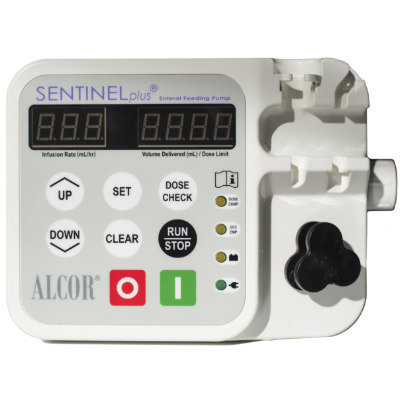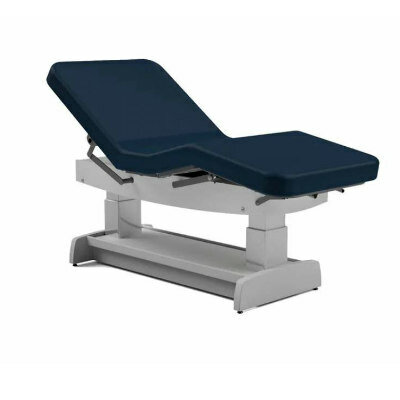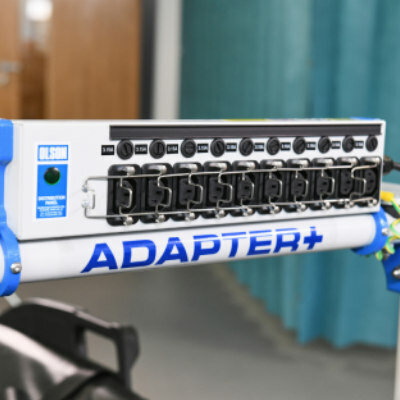Algorithm Accurately Predicts Heart Failure Survival
|
By HospiMedica International staff writers Posted on 30 May 2018 |

Image: The Trees of Predictors algorithm uses machine learning and 53 data points to more accurately predict life expectancy after heart failure (Photo courtesy of UCLA).
A team of researchers from UCLA (Los Angeles, USA) have developed a new algorithm that more accurately predicts which people will survive heart failure and for how long, as well as whether they will receive a heart transplant or not. The algorithm will allow doctors to carry out more personalized assessments of people awaiting heart transplants, thus enabling health care providers to efficiently use limited life-saving resources and reduce health care costs.
The algorithm, named Trees of Predictors, uses machine learning and takes into consideration 53 data points, including age, gender, body mass index, blood type and blood chemistry, to address the differences between people awaiting heart transplants and the compatibility between potential heart transplant recipients and donors. Using these data points, the algorithm predicts how long people with heart failure will live, depending upon whether they will receive a transplant or not. The algorithm can also analyze different possible risk scenarios for potential transplant candidates in order to assist doctors to more thoroughly assess people who can be candidates for heart transplants, and is flexible enough to incorporate more data as treatments evolve.
The UCLA researchers tested the algorithm using 30 years of data on people registered with the United Network for Organ Sharing, a non-profit organization that matches donors and transplant recipients in the US. The researchers found the algorithm provided significantly better predictions than the prediction models currently used by most doctors to project, which transplant recipients would live for at least three years after a transplant. The UCLA algorithm outperformed the models by 14% by correctly predicting that 2,442 more heart transplant recipients of the 17,441 who had received transplants and lived at least that long after the surgery. According to the researchers, the Trees of Predictors algorithm can also be used to gather insights from medical databases and various other types of complex databases.
“Our work suggests that more lives could be saved with the application of this new machine-learning–based algorithm,” said Mihaela van der Schaar, Chancellor’s Professor of Electrical and Computer Engineering at the UCLA Samueli School of Engineering, who led the study. “It would be especially useful for determining which patients need heart transplants most urgently and which patients are good candidates for bridge therapies such as implanted mechanical-assist devices.”
“Following this method, we are able to identify a significant number of patients who are good transplant candidates but were not identified as such by traditional approaches,” said Dr. Martin Cadeiras, a cardiologist at the David Geffen School of Medicine at UCLA. “This methodology better resembles the human thinking process by allowing multiple alternative solutions for the same problem but taking into consideration the variability of each individual.”
Related Links:
UCLA
The algorithm, named Trees of Predictors, uses machine learning and takes into consideration 53 data points, including age, gender, body mass index, blood type and blood chemistry, to address the differences between people awaiting heart transplants and the compatibility between potential heart transplant recipients and donors. Using these data points, the algorithm predicts how long people with heart failure will live, depending upon whether they will receive a transplant or not. The algorithm can also analyze different possible risk scenarios for potential transplant candidates in order to assist doctors to more thoroughly assess people who can be candidates for heart transplants, and is flexible enough to incorporate more data as treatments evolve.
The UCLA researchers tested the algorithm using 30 years of data on people registered with the United Network for Organ Sharing, a non-profit organization that matches donors and transplant recipients in the US. The researchers found the algorithm provided significantly better predictions than the prediction models currently used by most doctors to project, which transplant recipients would live for at least three years after a transplant. The UCLA algorithm outperformed the models by 14% by correctly predicting that 2,442 more heart transplant recipients of the 17,441 who had received transplants and lived at least that long after the surgery. According to the researchers, the Trees of Predictors algorithm can also be used to gather insights from medical databases and various other types of complex databases.
“Our work suggests that more lives could be saved with the application of this new machine-learning–based algorithm,” said Mihaela van der Schaar, Chancellor’s Professor of Electrical and Computer Engineering at the UCLA Samueli School of Engineering, who led the study. “It would be especially useful for determining which patients need heart transplants most urgently and which patients are good candidates for bridge therapies such as implanted mechanical-assist devices.”
“Following this method, we are able to identify a significant number of patients who are good transplant candidates but were not identified as such by traditional approaches,” said Dr. Martin Cadeiras, a cardiologist at the David Geffen School of Medicine at UCLA. “This methodology better resembles the human thinking process by allowing multiple alternative solutions for the same problem but taking into consideration the variability of each individual.”
Related Links:
UCLA
Latest Business News
- Johnson & Johnson Acquires Cardiovascular Medical Device Company Shockwave Medical
- Mindray to Acquire Chinese Medical Device Company APT Medical
- Olympus Acquires Korean GI Stent Maker Taewoong Medical
- Karl Storz Acquires British AI Specialist Innersight Labs
- Stryker to Acquire French Joint Replacement Company SERF SAS
- Medical Illumination Acquires Surgical Lighting Specialist Isolux
- 5G Remote-Controlled Robots to Enable Even Cross-Border Surgeries

- International Hospital Federation Announces 2023 IHF Award Winners
- Unprecedented AI Integration Transforming Surgery Landscape, Say Experts

- New WHO Guidelines to Revolutionize AI in Healthcare
- Getinge Acquires US-Based Medical Equipment Provider Healthmark Industries
- Global Surgical Lights Market Driven by Increasing Number of Procedures
- Global Capsule Endoscopy Market Driven by Demand for Accurate Diagnosis of Gastrointestinal Conditions
- Global OR Integration Market Driven by Need for Improved Workflow Efficiency and Productivity
- Global Endoscopy Devices Market Driven by Increasing Adoption of Endoscopes in Surgical Procedures
- Global Minimally Invasive Medical Devices Market Driven by Benefits of MIS Procedures
Channels
Artificial Intelligence
view channel
AI-Powered Algorithm to Revolutionize Detection of Atrial Fibrillation
Atrial fibrillation (AFib), a condition characterized by an irregular and often rapid heart rate, is linked to increased risks of stroke and heart failure. This is because the irregular heartbeat in AFib... Read more
AI Diagnostic Tool Accurately Detects Valvular Disorders Often Missed by Doctors
Doctors generally use stethoscopes to listen for the characteristic lub-dub sounds made by heart valves opening and closing. They also listen for less prominent sounds that indicate problems with these valves.... Read moreCritical Care
view channel
Deep-Learning Model Predicts Arrhythmia 30 Minutes before Onset
Atrial fibrillation, the most common type of cardiac arrhythmia worldwide, affected approximately 59 million people in 2019. Characterized by an irregular and often rapid heart rate, atrial fibrillation... Read more
Breakthrough Technology Combines Detection and Treatment of Nerve-Related Disorders in Single Procedure
The peripheral nervous system (PNS) serves as the communication network that links the brain and spinal cord to every other part of the body. It consists of two parts: the somatic nervous system, which... Read moreSurgical Techniques
view channel
Hydrogel-Based Miniaturized Electric Generators to Power Biomedical Devices
The development of engineered devices that can harvest and convert the mechanical motion of the human body into electricity is essential for powering bioelectronic devices. This mechanoelectrical energy... Read moreWearable Technology Monitors and Analyzes Surgeons' Posture during Long Surgical Procedures
The physical strain associated with the static postures maintained by neurosurgeons during long operations can lead to fatigue and musculoskeletal problems. An objective assessment of surgical ergonomics... Read more.jpg)
Custom 3D-Printed Orthopedic Implants Transform Joint Replacement Surgery
The evolving field of 3D printing is revolutionizing orthopedics, especially for individuals requiring joint replacement surgeries where traditional implants fail to provide a solution. Although most people... Read more
Cutting-Edge Imaging Platform Detects Residual Breast Cancer Missed During Lumpectomy Surgery
Breast cancer is becoming increasingly common, with statistics indicating that 1 in 8 women will develop the disease in their lifetime. Lumpectomy remains the predominant surgical intervention for treating... Read morePatient Care
view channel
Surgical Capacity Optimization Solution Helps Hospitals Boost OR Utilization
An innovative solution has the capability to transform surgical capacity utilization by targeting the root cause of surgical block time inefficiencies. Fujitsu Limited’s (Tokyo, Japan) Surgical Capacity... Read more
Game-Changing Innovation in Surgical Instrument Sterilization Significantly Improves OR Throughput
A groundbreaking innovation enables hospitals to significantly improve instrument processing time and throughput in operating rooms (ORs) and sterile processing departments. Turbett Surgical, Inc.... Read more
Next Gen ICU Bed to Help Address Complex Critical Care Needs
As the critical care environment becomes increasingly demanding and complex due to evolving hospital needs, there is a pressing requirement for innovations that can facilitate patient recovery.... Read moreGroundbreaking AI-Powered UV-C Disinfection Technology Redefines Infection Control Landscape
Healthcare-associated infection (HCAI) is a widespread complication in healthcare management, posing a significant health risk due to its potential to increase patient morbidity and mortality, prolong... Read moreHealth IT
view channel
Machine Learning Model Improves Mortality Risk Prediction for Cardiac Surgery Patients
Machine learning algorithms have been deployed to create predictive models in various medical fields, with some demonstrating improved outcomes compared to their standard-of-care counterparts.... Read more
Strategic Collaboration to Develop and Integrate Generative AI into Healthcare
Top industry experts have underscored the immediate requirement for healthcare systems and hospitals to respond to severe cost and margin pressures. Close to half of U.S. hospitals ended 2022 in the red... Read more
AI-Enabled Operating Rooms Solution Helps Hospitals Maximize Utilization and Unlock Capacity
For healthcare organizations, optimizing operating room (OR) utilization during prime time hours is a complex challenge. Surgeons and clinics face difficulties in finding available slots for booking cases,... Read more
AI Predicts Pancreatic Cancer Three Years before Diagnosis from Patients’ Medical Records
Screening for common cancers like breast, cervix, and prostate cancer relies on relatively simple and highly effective techniques, such as mammograms, Pap smears, and blood tests. These methods have revolutionized... Read morePoint of Care
view channel
Critical Bleeding Management System to Help Hospitals Further Standardize Viscoelastic Testing
Surgical procedures are often accompanied by significant blood loss and the subsequent high likelihood of the need for allogeneic blood transfusions. These transfusions, while critical, are linked to various... Read more
Point of Care HIV Test Enables Early Infection Diagnosis for Infants
Early diagnosis and initiation of treatment are crucial for the survival of infants infected with HIV (human immunodeficiency virus). Without treatment, approximately 50% of infants who acquire HIV during... Read more
Whole Blood Rapid Test Aids Assessment of Concussion at Patient's Bedside
In the United States annually, approximately five million individuals seek emergency department care for traumatic brain injuries (TBIs), yet over half of those suspecting a concussion may never get it checked.... Read more















